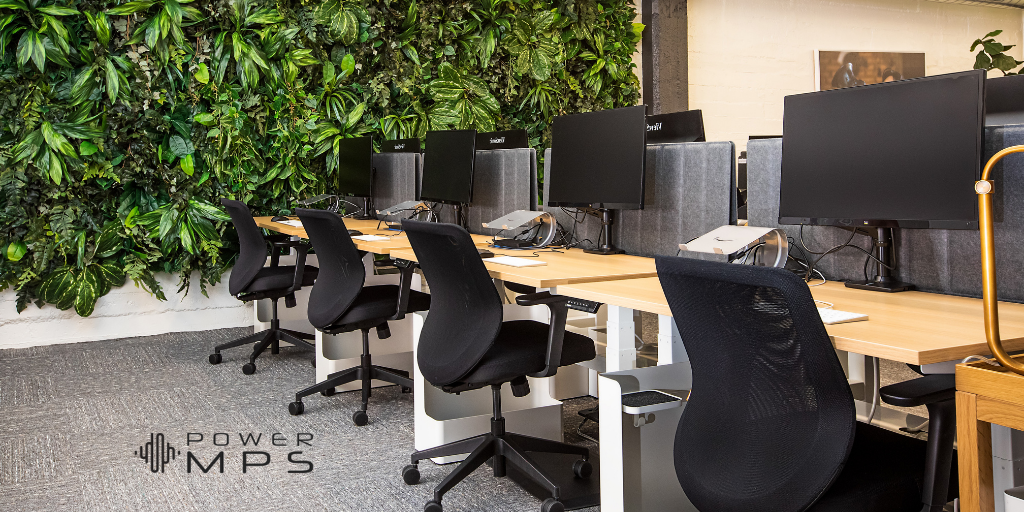Remember back in 2020 when people took pictures of wildlife crossing highways and clear air in cities renowned for their terrible visibility? According to several studies, people being stuck at home did affect the world – beyond less traffic and noise. For example, global carbon monoxide emissions dropped 7%.
But air quality wasn’t the only thing affected by stay-at-home orders. There was also a drastic reduction in office paper use. A large part of this decline was the fast transition forced by government mandates. While businesses could switch to cloud-based solutions and send home laptops, desktops, and monitors, the office printer presented far more of a challenge.
But, with the majority of businesses (75%) looking to have the majority of their staff back in the office by the end of the year, chances are good employees will fall back into old habits quickly. And the majority of US businesses expect print volumes to remain the same or increase once people are back in the office. So is it any wonder that, in 2021, office printing and its associated waste are still an issue for companies looking to present themselves as more efficient and environmentally friendly?
Office Waste By The Numbers
Back in pre-COVID times, employees were using an average of 156 plastic bottles, 2 pounds of mixed paper products, and 10,000 sheets of paper per year. And, with seventy percent of businesses planning to have employees back to the office by year-end, the trend is likely to continue. Despite new distancing procedures and possible mask requirements, the comfort of being back in the office will allow workers to fall back into a semblance of their old routines. And those routines include visits to the office printer.
Despite extensive efforts to raise awareness about waste, paper consumption in the US has risen over one hundred percent (126%) in the past two decades. The United States uses thirty percent of the world’s paper – around sixty-eight million trees each year. It is estimated that nearly three-quarters (over 70%) of US businesses would fail if they lost their paper records to flood or fire.
Yet, nearly half of all pages printed (45%) in the office end up in the trash. And ninety percent of companies have no idea how many printers they have, how much paper they use, or the amount they spend on printing.
The Cost Of All That Uncontrolled Printing
Total business printing costs can eat up to fifteen percent of a company’s revenues. And, while the majority of that money is tied up in maintenance, service, security, and configuration, a good chunk is in good-old-fashioned ink, toner, and paper.
As people head back to the office, experts estimate printing volumes in the US are estimated to return to normal. There may even be a short-term increase in printing due to the need to catch up on previously delayed work, updated safety manuals, and additional information to raise awareness of new workplace policies.
And the movement to hybrid office formats is unlikely to affect the transition back to prior print volumes. As companies finalize their plans for post-COVID office planning, facilitating employee printing is a part of the conversation. So, this return to regular print volumes, rather than hindered by the uptick in work-from-home, will be bolstered in the US by the growing movement to place approved local printers in remote offices.
Strategies To Get Office Waste Under Control
Some of the best solutions to combatting office waste are the most basic. For instance, introducing an office recycling program can help in tackling more than disposable coffee cups. It can also give employees a place to deposit plastic water and soda bottles where they can be taken somewhere better than the local dump. And all those abandoned print jobs can be carted away to make new paper for future printer use.
But it is possible to help stop paper waste right at the source by modifying employee behavior and company print practices through better usage tracking. In addition, a good MPS provider can introduce a wealth of additional greener printing options. For example, high-efficiency printers can optimize printer performance and provide paper-saving options like double-sided printing.
The types of business printers offered by MPS can also use identity verification to reduce the number of abandoned print jobs. Before a printer produces a document, the originator must verify their identity at the point of print when ready for pick-up. Rather than a document waiting in the tray for its owner to swing by, employees must be at the printer and take action to activate the job’s completion.
Perhaps most importantly, MPS can help businesses identify printer use trends business-wide, by department, and even by individual computers. Armed with this information, a company can incentivize employees or departments to achieve positive change by printing more efficiently or reducing their total number of monthly printed pages.
Greener Post-COVID
No matter the strategy for offices as they come back from quarantine, office printing is far from a thing of the past. The idea might be to become greener for consumers, attract employees who may be more environmentally conscious, or save some money on office printing. But, no matter the reason, this time of change is the perfect point to reevaluate how the company handles printing and paper waste.
CLICK HERE to learn other ways to adjust to our new office and working environments.
